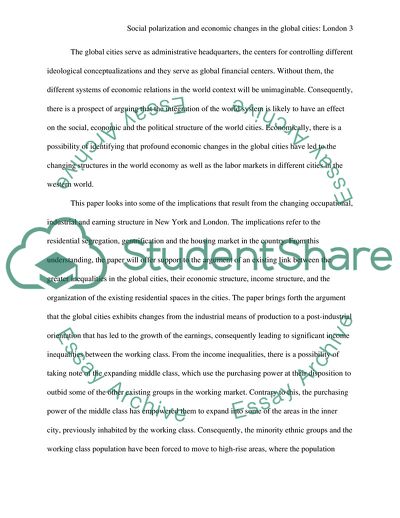Cite this document
(Social Polarization And Economic Changes In The Global Cities Coursework, n.d.)
Social Polarization And Economic Changes In The Global Cities Coursework. https://studentshare.org/social-science/1810058-global-cities-have-gone-through-similar-social-polarisation-processes-as-a-result-of-their-role-in-the-world-economy-discuss-with-reference-to-any-two-of-the-following-cities-london-new-york-los-angeles-tokyo-toronto
Social Polarization And Economic Changes In The Global Cities Coursework. https://studentshare.org/social-science/1810058-global-cities-have-gone-through-similar-social-polarisation-processes-as-a-result-of-their-role-in-the-world-economy-discuss-with-reference-to-any-two-of-the-following-cities-london-new-york-los-angeles-tokyo-toronto
(Social Polarization And Economic Changes In The Global Cities Coursework)
Social Polarization And Economic Changes In The Global Cities Coursework. https://studentshare.org/social-science/1810058-global-cities-have-gone-through-similar-social-polarisation-processes-as-a-result-of-their-role-in-the-world-economy-discuss-with-reference-to-any-two-of-the-following-cities-london-new-york-los-angeles-tokyo-toronto.
Social Polarization And Economic Changes In The Global Cities Coursework. https://studentshare.org/social-science/1810058-global-cities-have-gone-through-similar-social-polarisation-processes-as-a-result-of-their-role-in-the-world-economy-discuss-with-reference-to-any-two-of-the-following-cities-london-new-york-los-angeles-tokyo-toronto.
“Social Polarization And Economic Changes In The Global Cities Coursework”. https://studentshare.org/social-science/1810058-global-cities-have-gone-through-similar-social-polarisation-processes-as-a-result-of-their-role-in-the-world-economy-discuss-with-reference-to-any-two-of-the-following-cities-london-new-york-los-angeles-tokyo-toronto.


